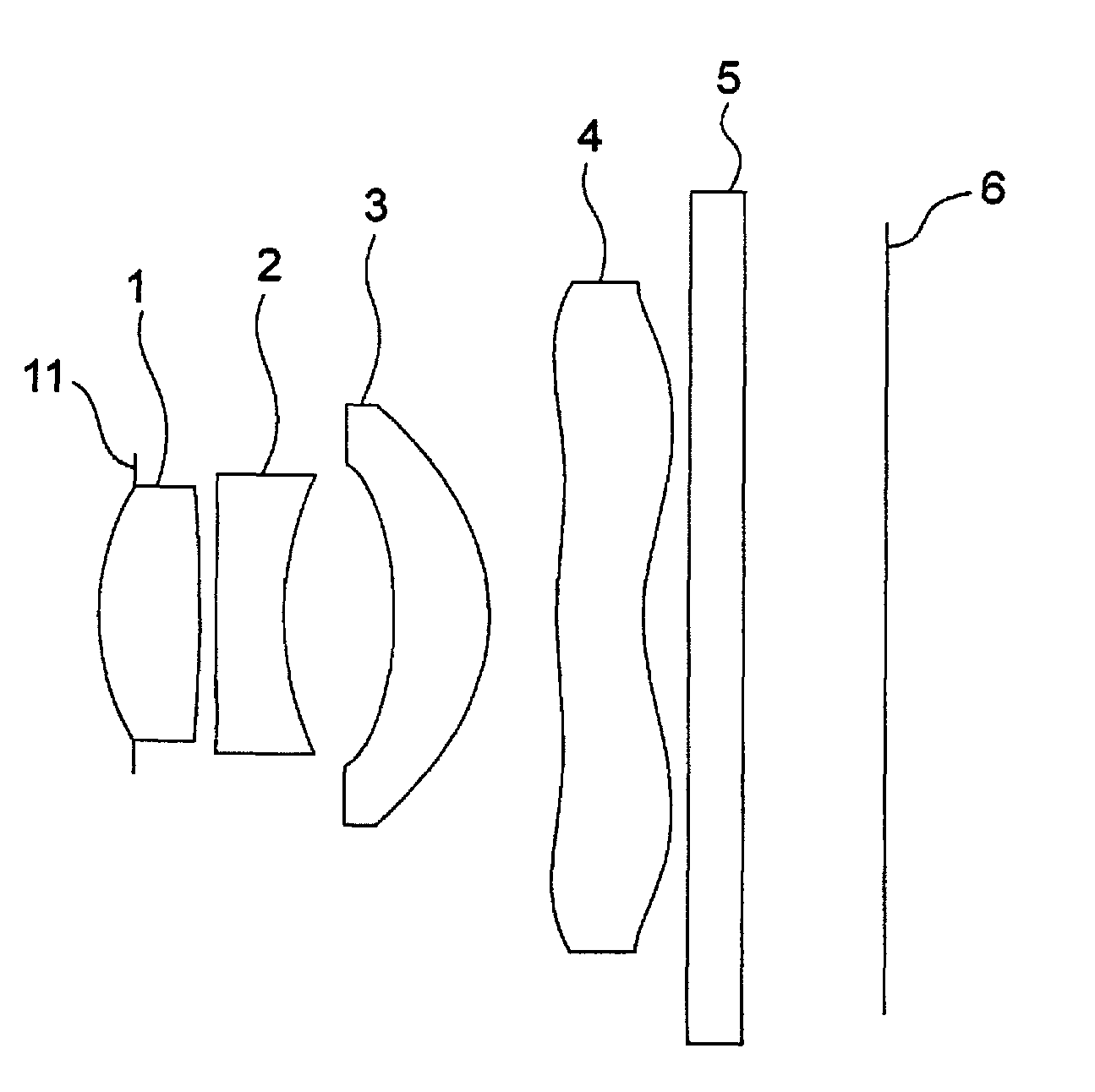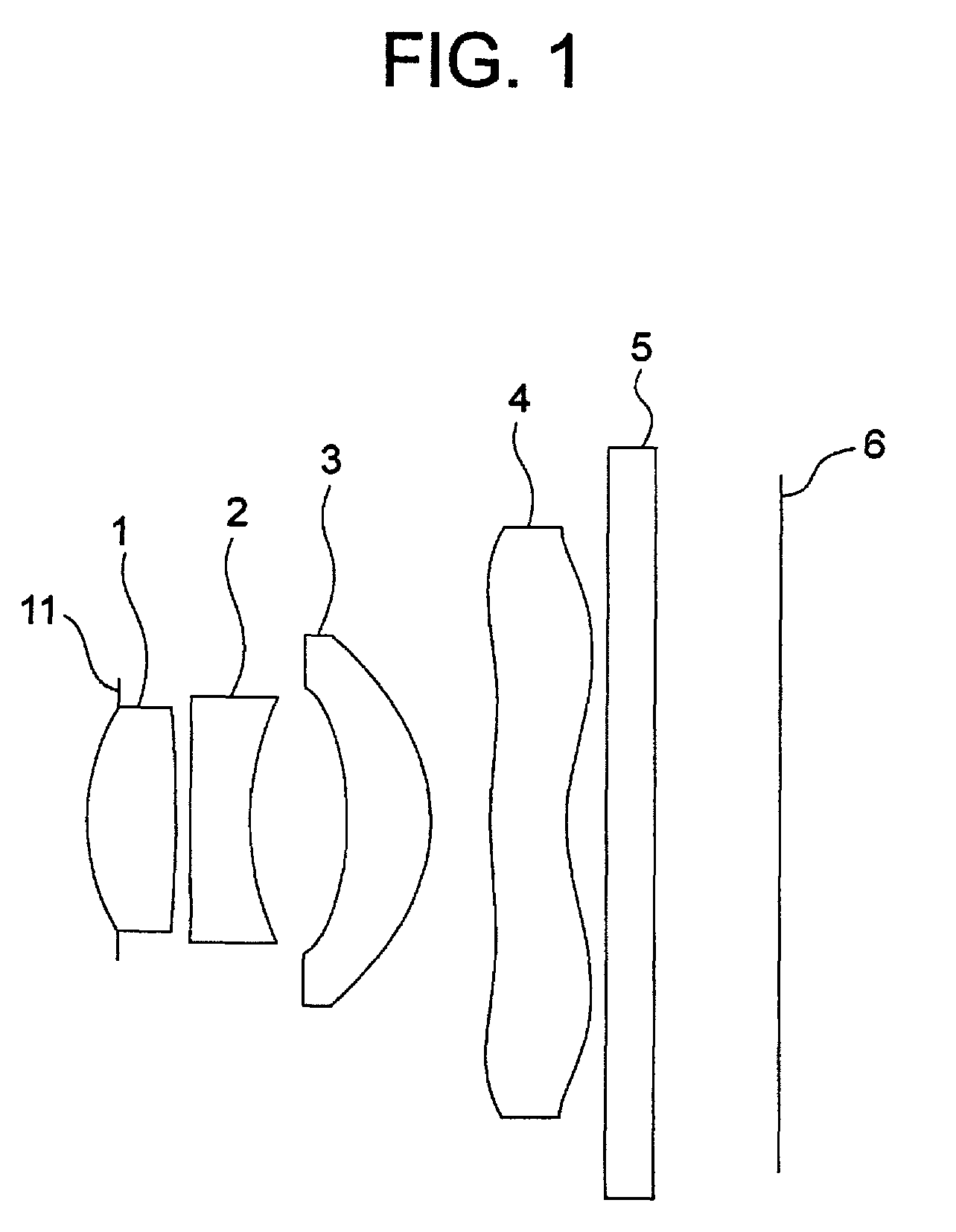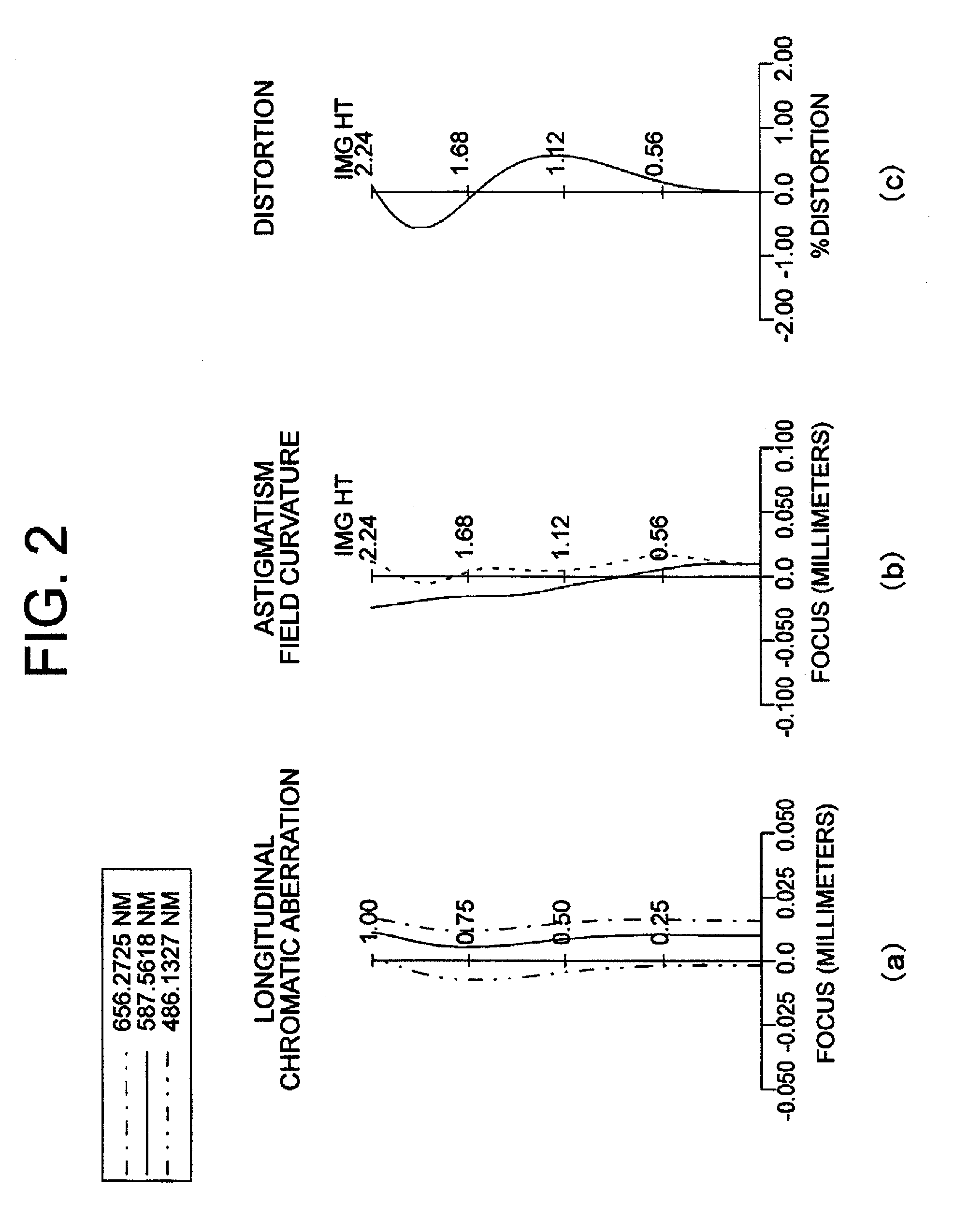Image forming optical system
an optical system and image technology, applied in optics, instruments, diffraction gratings, etc., can solve the problems of lager chromatic aberration, astigmatism, angle of incidence, and prevent efficient image forming, so as to reduce spherical aberration, reduce field curvature, and increase resolution
- Summary
- Abstract
- Description
- Claims
- Application Information
AI Technical Summary
Benefits of technology
Problems solved by technology
Method used
Image
Examples
example 1
[0046]FIG. 1 shows a construction of an image forming optical system according to Example 1. The image forming optical system according to Example 1 includes a first lens 1, a second lens 2, a third lens 3 and a fourth lens 4 arranged from the object side to the image side. A field stop 11 is located on the object side of the image side plane of the first lens 1 and on the image side of the vertex of the object side plane of the first lens 1. Light having passed through the first lens 1, the second lens 2, the third lens 3 and the fourth lens 4 passes through a glass plate 5 and arrives at an image plane 6.
[0047]FIG. 2 shows aberrations of the image forming optical system according to Example 1. FIG. 2(a) represents longitudinal chromatic aberration. The horizontal axis of FIG. 2(a) represents a focal position in the optical axis direction. Unit is millimeter. The vertical axis of FIG. 2(a) represents a position in the field stop plane though which light passes. “0” on the vertical ...
example 2
[0053]FIG. 3 shows a construction of an image forming optical system according to Example 2. The image forming optical system according to Example 2 includes a first lens 201, a second lens 202, a third lens 203 and a fourth lens 204 arranged from the object side to the image side. A field stop 2011 is located on the object side of the image side plane of the first lens 201 and on the image side of the vertex of the object side plane of the first lens 201. Light having passed through the first lens 201, the second lens 202, the third lens 203 and the fourth lens 204 passes through a glass plate 205 and arrives at an image plane 206.
[0054]FIG. 4 shows aberrations of the image forming optical system according to Example 2. FIG. 4(a) represents longitudinal chromatic aberration. The horizontal axis of FIG. 4(a) represents a focal position in the optical axis direction. Unit is millimeter. The vertical axis of FIG. 4(a) represents a position in the field stop plane though which light pa...
example 3
[0060]FIG. 5 shows a construction of an image forming optical system according to Example 3. The image forming optical system according to Example 3 includes a first lens 301, a second lens 302, a third lens 303 and a fourth lens 304 arranged from the object side to the image side. A field stop 3011 is located on the object side of the image side plane of the first lens 301 and on the image side of the vertex of the object side plane of the first lens 301. Light having passed through the first lens 301, the second lens 302, the third lens 303 and the fourth lens 304 passes through a glass plate 305 and arrives at an image plane 306.
[0061]FIG. 6 shows aberrations of the image forming optical system according to Example 3. FIG. 6(a) represents longitudinal chromatic aberration. The horizontal axis of FIG. 6 (a) represents a focal position in the optical axis direction. Unit is millimeter. The vertical axis of FIG. 6(a) represents a position in the field stop plane though which light p...
PUM
 Login to View More
Login to View More Abstract
Description
Claims
Application Information
 Login to View More
Login to View More - R&D
- Intellectual Property
- Life Sciences
- Materials
- Tech Scout
- Unparalleled Data Quality
- Higher Quality Content
- 60% Fewer Hallucinations
Browse by: Latest US Patents, China's latest patents, Technical Efficacy Thesaurus, Application Domain, Technology Topic, Popular Technical Reports.
© 2025 PatSnap. All rights reserved.Legal|Privacy policy|Modern Slavery Act Transparency Statement|Sitemap|About US| Contact US: help@patsnap.com



